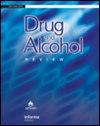Does parental cohort increase the likelihood of underage alcohol consumption in Australia?
Abstract
Introduction
Adolescent alcohol consumption has declined in many high-income countries, with some evidence pointing toward shifts in parenting practices as a key driver. Parenting styles related to alcohol use may be influenced by the generation of the parent. This study aims to investigate the role of parental generation on alcohol consumption in 15-year-olds.
Methods
Data from 2904 15-year-old respondents were extracted from 18 annual waves (2002–2019) of a long-running Australian cohort study. Logistic regression analyses were used to determine whether parental birth cohort significantly differed between drinkers and abstainers, and whether that relationship changed across time. The birth year of the oldest parent was used to assign them to one of three cohorts. The child's socio-demographic variables (age, gender, socio-economic disadvantage, cultural background, school attendance and regionality) and family dynamics and structure (age of oldest parent at birth, number of parents, parental alcohol consumption, having an older sibling) were controlled for in the analyses.
Results
Later survey wave (odds ratio 0.87) and attending school (odds ratio 0.23) decreased the likelihood of alcohol drinking for 15-year-olds. Having a parent who drinks (odds ratio 2.71), an older sibling (odds ratio 1.39), a single parent (odds ratio 1.68) and living outside a city (odds ratio 1.31) also predicted an increased likelihood of alcohol consumption. Having a parent from an earlier cohort was not significantly associated with adolescent alcohol consumption.
Discussion and Conclusions
The study found no evidence to suggest that parents' birth cohort influenced adolescent alcohol consumption.

 求助内容:
求助内容: 应助结果提醒方式:
应助结果提醒方式:


